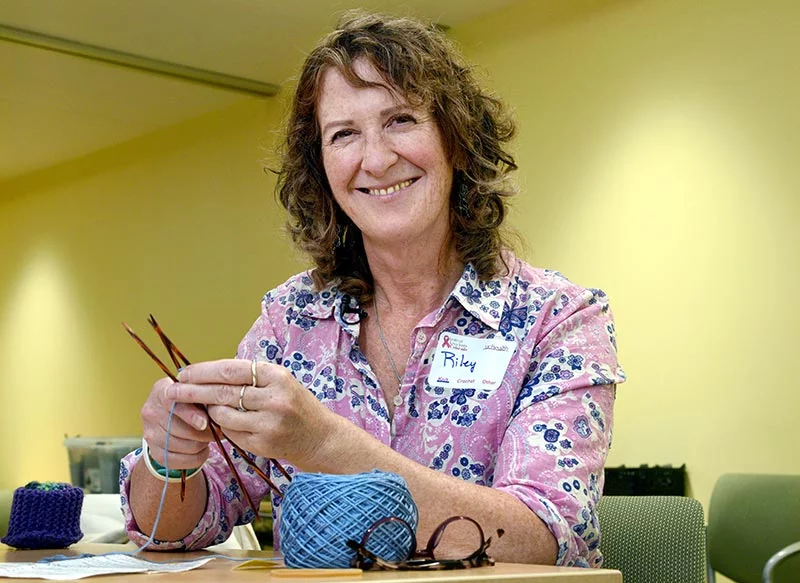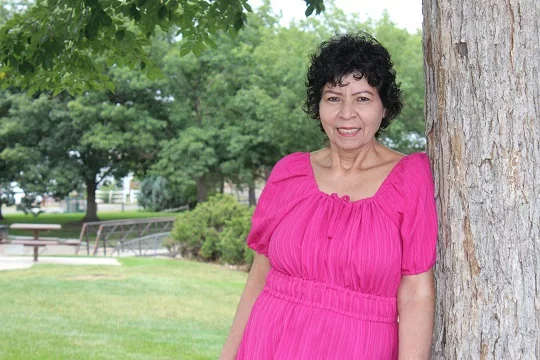Breast imaging and tests
As part of our suite of breast health services, UCHealth offers the most advanced breast imaging and digital mammograms available. Our skilled and compassionate breast radiologists, technologists and support staff are committed to your health and comfort.
Helping women take charge of their breast health
UCHealth is dedicated to helping women of all ages take charge of their breast health through prevention and early detection of breast cancer and other conditions.
Advanced breast care services
Our full suite of state-of-the-art imaging and testing services includes:
- Digital mammography – screening and diagnostic.
- 3D mammography (Available now in Colorado Springs, Denver and Fort Collins. Coming soon to Loveland and Greeley.).
- Breast MRI.
- Breast ultrasound.
- Breast lesion localization.
- Stereotactic breast biopsy.
- Ductogram/galactogram-guided biopsy.
- MRI-guided biopsy.
- Ultrasound-guided biopsy.
- Ultrasound-guided aspiration.
Experience the benefits of digital mammography
A mammogram is an X-ray picture of the breasts used to find breast tumors and cancer.
UCHealth offers the latest in full-field digital mammography, which converts X-rays into electronic signals that are viewed and analyzed by our specially trained radiologists using a computer-aided detection (CAD) system.
This technology offers a host of advantages, including:
- Lower radiation dose.
- Fewer patient call-backs for additional imaging.
- Increased imaging contrast for breast implants and dense breasts.
Same-week mammogram appointments are typically available for your convenience, with walk-in screenings at some UCHealth locations across Denver.
Committed to your imaging safety.
UCHealth radiology facilities make imaging safety our number one priority. We take every precaution necessary to ensure that you are safe and comfortable during your imaging test or procedure.
The importance of regular breast screenings
Beginning at age 40, annual screening mammograms remain the key to catching breast cancer in its earliest—and most treatable—stage.
Routine breast cancer screenings are important for early detection.
These screenings include:
- Monthly self-breast exams.
- Yearly breast exam, usually conducted at an annual gynecologic exam.
- Yearly mammogram for women age 40 and older, or younger women who are at high risk for developing breast cancer.
- Other screenings that may be recommended for women who are at high risk for developing breast cancer.
At UCHealth, you can schedule your breast examination with whomever makes you feel most comfortable – a doctor, nurse practitioner or certified nurse midwife.
All of our breast health specialists provide the sensitive, confidential and high-quality care you expect and deserve.

FAQs about 3D Tomosynthesis Mammography
What is a 3D mammography breast exam?
Breast tomosynthesis, also called 3D mammography, is a revolutionary new screening tool designed for early breast cancer detection. 3D mammography converts multiple digital breast images into a stack of very thin layers or “slices” – building a three-dimensional image of the breast.
What are the benefits of 3D mammography?
With conventional digital mammography, a radiologist views all of the complexities of your breast tissue – such as blood vessels, milk ducts, fat and ligaments – in one flat image. Sometimes breast tissue can overlap, giving normal breast tissue the illusion of looking abnormal. By looking at the breast as a three-dimensional structure, radiologists get clearer and more accurate views of the tissue. For patients, this means that breast cancer can be found sooner. It also means there is less chance of your doctor calling you back for an unneeded “second look.”
What should I expect during a 3D mammography exam?
A 3D mammography exam is very similar to a traditional mammogram. A technologist will position you, compress your breast under a paddle and then take images from different angles. During the 3D part of the exam, an X-ray arm sweeps in a slight arc over your breast, taking multiple images in just seconds. There is no additional compression required with 3D mammography, and it only takes a few seconds longer for each view.
Is there more radiation during a 3D exam?
Very low X-ray energy is used during the exam. It’s nearly the same amount as a traditional mammogram, which is below the FDA guidelines.
Who can have a 3D mammography exam?
3D mammography is approved for all women who would be undergoing a standard mammogram. The American Cancer Society recommends yearly comprehensive breast exams and screening mammography starting at age 40. Individuals with family history of breast or ovarian cancer or other risk factors may qualify for earlier or more frequent screenings. UCHealth offers a High-Risk Clinic and genetic counseling services to help women develop personal screening plans.
How should I prepare for a 3D mammography exam?
3D mammography preparation is the same as traditional 2D mammography. Don’t wear deodorant, perfume, lotion or powder on your breasts or underarms, and wearing a two-piece outfit is recommended. It’s best to schedule the exam for a time when your breasts are not tender.
Does it matter where I’m screened?
Breast imaging is available at many radiology clinics and locations that are not affiliated with a hospital or health system. They perform mammograms in addition to a number of other X-ray services.
In contrast, the Mary Lou Beshears Breast Care Center at UCHealth-Memorial Hospital specializes in breast health. Our radiologists, the doctors who read the images, are dedicated to reading breast films. UCHealth is the only hospital system in southern Colorado to offer 3D mammography, which is the most advanced imaging technology available for breast screening.
In addition, patients screened through the Mary Lou Beshears Breast Care Center are connected to the state-wide network of UCHealth physicians and experts. In southern Colorado, it is the only breast care center affiliated with a National Cancer Institute-designated cancer program and an academic medical center.
References
Society of Breast Imaging. SBI – https://www.sbi-online.org/
American Cancer Society. Newer and Experimental Breast Imaging Tests – https://www.cancer.org/cancer/breast-cancer/screening-tests-and-early-detection/experimental-breast-imaging.html
National Institute of Biomedical Imaging and Bioengineering (NIBIB). Mammography – https://www.nibib.nih.gov/science-education/science-topics/mammography






